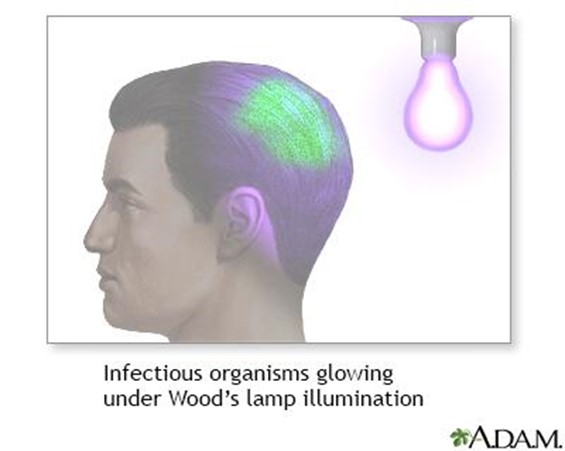A nurse is assisting a client with a visual impairment to use the restroom. Which of the following actions will the nurse take to prevent complications?
Increase her voice when speaking to the client
Lower the bed rails before lowering the bed
Use hand gestures to point to where the client will walk
Stand slightly in front and to one side of the client
The Correct Answer is D
Choice A reason: This is incorrect because increasing her voice when speaking to the client may not prevent complications, but rather annoy or offend the client. The nurse should not assume that a client with a visual impairment has a hearing impairment as well unless it is confirmed by assessment or history. The nurse should speak in a normal tone and volume and identify herself by name and role.
Choice B reason: This is incorrect because lowering the bed rails before lowering the bed may increase the risk of complications, such as falls or injuries. The nurse should keep the bed rails up until the client is ready to get out of bed and lower them only when necessary. The nurse should also lock the wheels of the bed and adjust it to a comfortable height for the client.
Choice C reason: This is incorrect because using hand gestures to point to where the client will walk may not prevent complications, but rather confuse or frustrate the client. The nurse should not use visual cues or gestures that are meaningless to a client with a visual impairment. The nurse should use verbal directions and descriptions instead, such as "The restroom is on your left, about 10 steps away."
Choice D reason: This is correct because standing slightly in front and to one side of the client can prevent complications, such as collisions or falls. The nurse should guide the client by offering her arm or shoulder for support and walking slightly ahead of him or her. The nurse should also warn the client about any obstacles or changes in terrain, such as stairs, doors, or rugs.
Nursing Test Bank
Naxlex Comprehensive Predictor Exams
Related Questions
Correct Answer is D
Explanation
Choice A Reason: Culture is not a diagnostic test that uses an ultraviolet light source, but a laboratory test that involves growing microorganisms from a sample of body fluid or tissue. Culture can help identify the type and sensitivity of the infection-causing agent.
Choice B Reason: KOH is not a diagnostic test that uses an ultraviolet light source, but a chemical test that involves applying potassium hydroxide to a sample of skin, hair, or nail. KOH can help diagnose fungal infections by dissolving the keratin and revealing the fungal elements under a microscope.
Choice C Reason: Diascopy is not a diagnostic test that uses an ultraviolet light source, but a physical test that involves applying pressure to a lesion with a glass slide or lens. Diascopy can help differentiate between blanchable and non-blanchable lesions, such as erythema or petechiae.
Choice D Reason: Wood's is a diagnostic test that uses an ultraviolet light source, also known as a Wood's lamp or black light. Wood's can help observe color changes to the skin that are not visible under normal light, such as fluorescence or hypopigmentation. Wood's can help diagnose conditions such as tinea capitis, vitiligo, or erythrasma.

Correct Answer is A
Explanation
Choice A reason: This is the correct answer because this question will help the nurse assess the pain level and discomfort of the client with red scaling papules. Red scaling papules are raised skin lesions that are red and covered with scales. They can indicate psoriasis, which is a chronic skin condition that causes inflammation and rapid turnover of skin cells. Psoriasis can cause pain, itching, burning, or stinging sensations in the affected areas. The nurse should ask the client to rate their pain on a numeric or descriptive scale and provide analgesics or topical agents as prescribed.
Choice B reason: This is incorrect because this question will not help the nurse assess the condition of the client with red scaling papules. Red scaling papules are not affected by food intake but by other factors such as stress, infection, injury, or medication. Psoriasis is not an allergic or dietary disorder, but an immune-mediated disorder that causes abnormal skin cell growth. The nurse should ask the client about their medical history, current medications, and triggers or aggravating factors for their psoriasis.
Choice C reason: This is incorrect because this question will not help the nurse assess the condition of the client with red scaling papules. Red scaling papules are not treated with antibiotics but with other medications such as corticosteroids, immunosuppressants, or biologics. Antibiotics are used to treat bacterial infections, which are not the cause of psoriasis. The nurse should ask the client about their treatment regimen, compliance, and effectiveness for their psoriasis.
Choice D reason: This is incorrect because this question will not help the nurse assess the condition of
the client with red scaling papules. Red scaling papules are not related to weekend activities but to chronic skin inflammation and abnormal cell turnover. Psoriasis is not a lifestyle disorder, but a genetic disorder that can be influenced by environmental factors. The nurse should ask the client about their family history, exposure to sun or cold, and stress level for their psoriasis.
Whether you are a student looking to ace your exams or a practicing nurse seeking to enhance your expertise , our nursing education contents will empower you with the confidence and competence to make a difference in the lives of patients and become a respected leader in the healthcare field.
Visit Naxlex, invest in your future and unlock endless possibilities with our unparalleled nursing education contents today
Report Wrong Answer on the Current Question
Do you disagree with the answer? If yes, what is your expected answer? Explain.
Kindly be descriptive with the issue you are facing.
